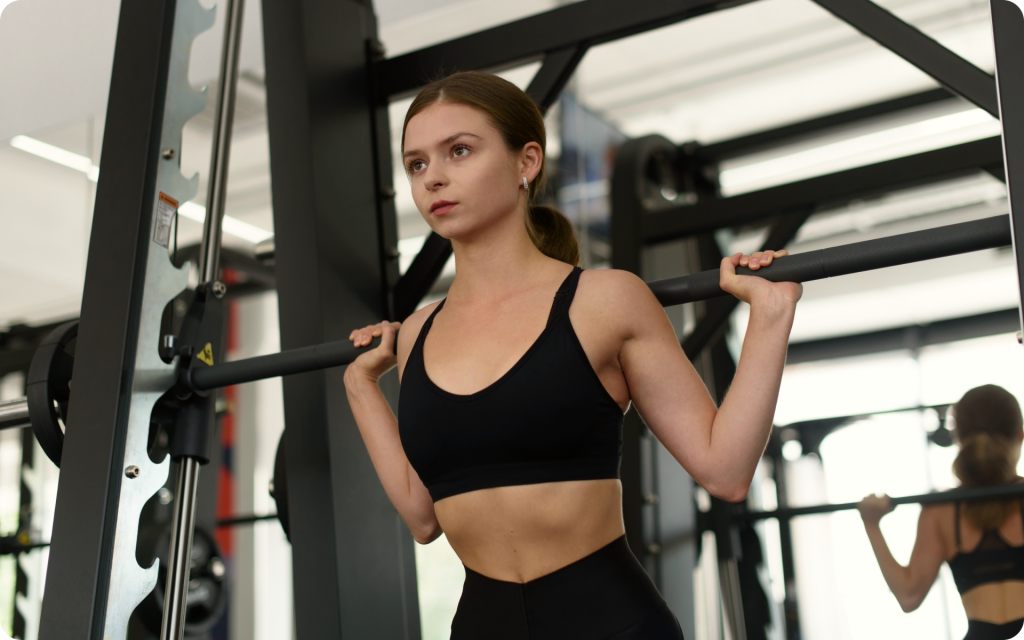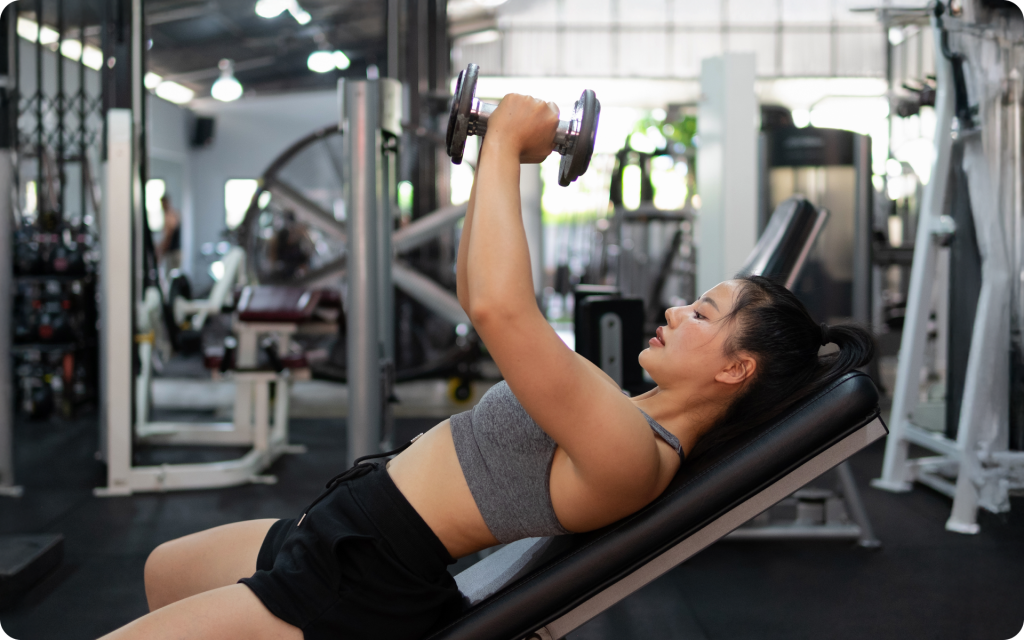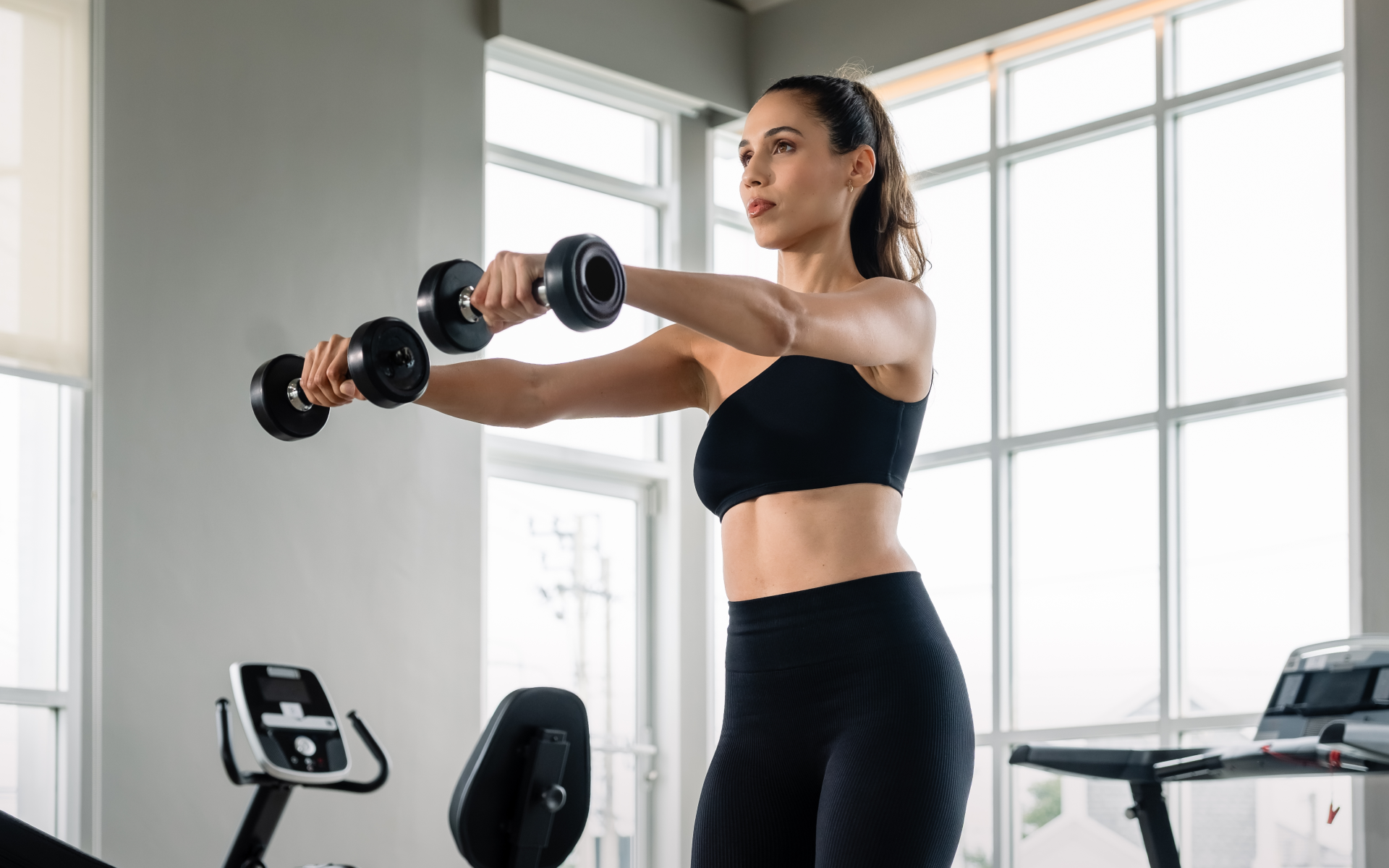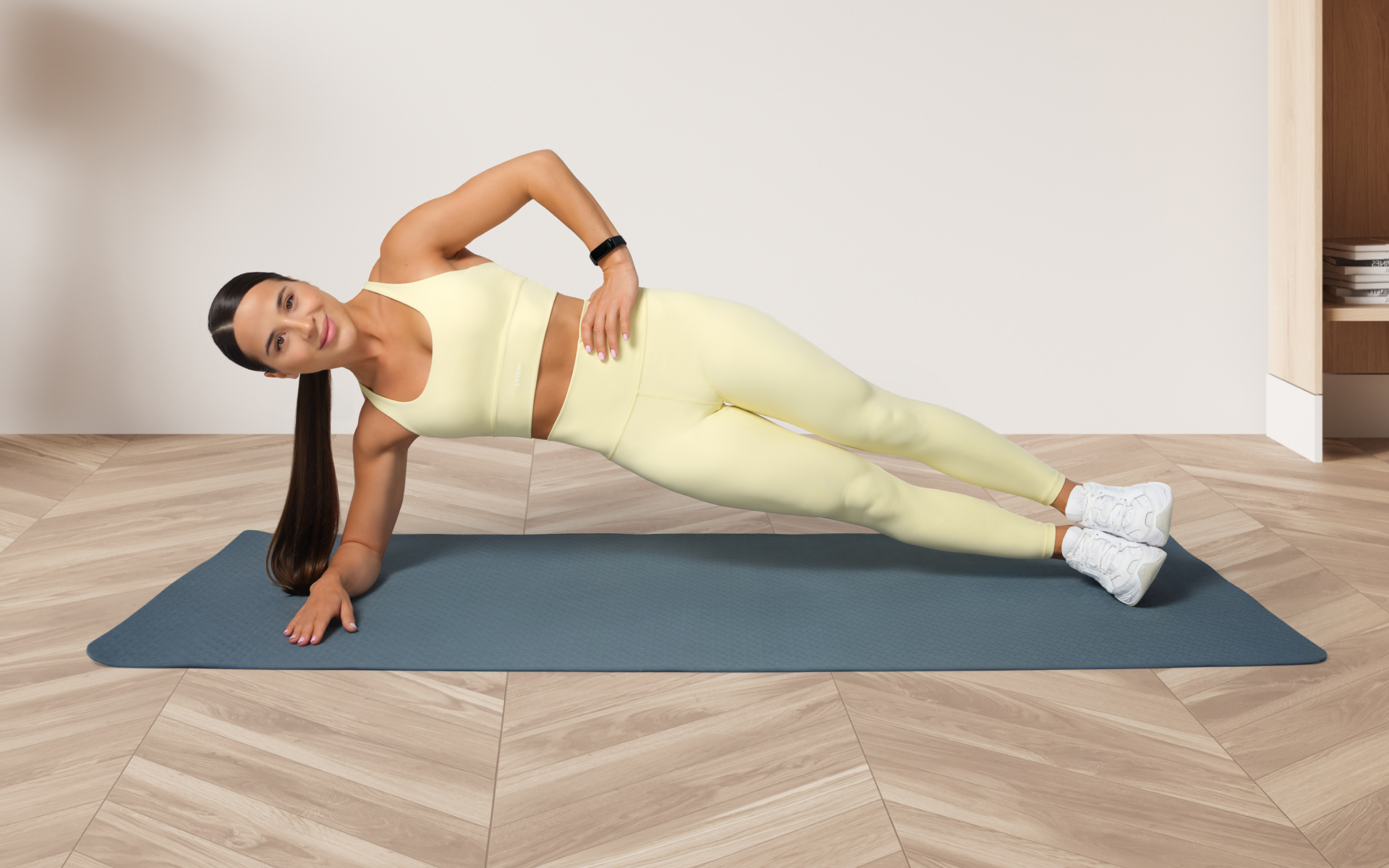When it comes to strength training, using a structured plan can make all the difference. One approach many fitness enthusiasts use is “split training”, a method that divides your workouts into specific muscle groups or movement patterns across different days.
Instead of working your entire body every session, you spread the load throughout the week. This can help you focus on certain areas, manage recovery, and train more effectively.
One popular version of split training is the upper-lower split. Here, your workouts are divided into days dedicated to your upper body (chest, back, shoulders, and arms) and days that target your lower body (legs, glutes, and calves). It may sound simple in theory, but how effective is it? And more importantly, is it the right fit for your fitness goals?
Here’s what you should know about an upper-lower split.
Is an Upper-Lower Split Effective?
This type of training divides your workouts into two categories. Upper-body exercises (e.g. chest, back, shoulders, arms) are performed on one day, while lower-body exercises (e.g. quads, hamstrings, glutes, calves) are performed on another. This is often cycled over a four-day schedule, with two upper- and two lower-body sessions weekly (1).
Factors That Make Upper-Lower Split Effective
- Balanced Muscle Group Targeting
Training specific areas on different days allows focused effort. By dedicating a session solely to the upper or lower body, you can give each muscle group adequate attention. This can reduce the likelihood of neglecting smaller but important muscles, such as the biceps or calves.
- Recovery Optimization
Splitting the upper and lower body lets certain muscle groups rest while others work. For example, after training your legs on Tuesday, your lower body rests while you hit your chest and back on Wednesday. Adequate recovery is essential as muscles grow and repair during rest, not during exercise.
- Volume and Intensity
Research has suggested that a moderate-to-high training volume (number of sets and reps) promotes muscle growth (hypertrophy) (2). The upper-lower split helps spread this volume across multiple sessions. Instead of cramming everything into one full-body workout, you can target smaller groups with more exercises per session.
- Adaptable for Progression
Whether you’re a beginner or an advanced lifter, this split can evolve with you. Beginners often build strength with two sessions per week. Advanced athletes who prioritize strength or size can add more sessions (e.g. a six-day routine). Adjustability means it can support long-term progress.
When it comes to weight loss, progress is made by inches, not miles, so it’s much harder to track and a lot easier to give up. The BetterMe: Health Coaching app is your personal trainer, nutritionist, and support system all in one. Start using our app to stay on track and hold yourself accountable!
Potential Drawbacks of an Upper-Lower Split
- Frequency May Matter
Upper-lower splits are often programmed as a 4-day routine, which means each muscle is worked twice weekly. While it’s effective, some research has indicated that training muscle groups 2-3 times weekly may maximize hypertrophy. A 4-day split may not suit advanced lifters who need higher frequency.
- Time Commitment
These sessions can be longer, particularly if you’re performing multiple exercises for each region. This approach may strain individuals who need quick workouts or have tight schedules.
- Fatigue Accumulation
Splitting your sessions by region doesn’t eliminate systemic fatigue (overall tiredness). For example, heavy squats and Romanian deadlifts often leave your nervous system fatigued, which could spill over into your next upper session.
- Risk of Overemphasis
Without careful planning, you could unintentionally favor certain muscle groups. Overloading the chest but ignoring the posterior chain (back and hamstrings) can create imbalances. Programs should be balanced to avoid these issues.
Read more: 20-Minute Cardio Workout: Quick, Effective, and Beginner-Friendly
What Is an Example of an Upper-Lower Split?
An upper-lower split typically divides your week into workouts that target either the upper body or the lower body. Here’s a practical four-day example to show how it works:
Day 1: Upper Body – Strength Focus
- Bench Press (3 sets of 6-8 reps): A compound movement for the chest, shoulders, and triceps.
- Pull-Ups (3 sets of 6-8 reps): A pulling exercise for the back and biceps.
- Overhead Press (3 sets of 6-8 reps): Targets the shoulders and triceps.
- Barbell Rows (3 sets of 6-8 reps): Builds back strength and stability.
- Bicep Curls (2 sets of 10-12 reps): For isolated bicep work.
- Tricep Dips (2 sets of 10-12 reps): Focuses on the triceps.
For more upper body bodyweight exercises, look at our earlier article.
Day 2: Lower Body – Strength Focus
- Squats (3 sets of 6-8 reps): A core compound exercise for the quads, hamstrings, and glutes.
- Romanian Deadlifts (3 sets of 6-8 reps): Targets hamstrings and glutes.
- Lunges (2 sets of 8-10 reps per leg): Builds single-leg strength and balance.
- Leg Curls (2 sets of 10-12 reps): Isolation movement for hamstrings.
- Calf Raises (2 sets of 15-20 reps): Strengthens calves.
Here is a bodyweight lower body workout that you can do in the comfort of your home.
Day 3: Rest or Active Recovery
Take a rest day or engage in light activities such as walking, yoga, or stretching.
Day 4: Upper Body – Hypertrophy Focus (Muscle Growth)
- Incline Dumbbell Press (3 sets of 8-10 reps): Targets the upper chest.
- Lat Pulldowns (3 sets of 8-10 reps): Builds back width.
- Lateral Raises (3 sets of 10-12 reps): Isolates the shoulders.
- Chest Flys (2 sets of 10-12 reps): Focuses on the chest.
- Hammer Curls (2 sets of 12-15 reps): Works both the biceps and forearms.
- Overhead Tricep Extensions (2 sets of 12-15 reps): For the triceps.
Day 5: Lower Body – Hypertrophy Focus
- Leg Press (3 sets of 8-10 reps): Works the quads and glutes.
- Bulgarian Split Squats (3 sets of 8-10 reps per leg): Enhances balance and single-leg strength.
- Deadlifts (3 sets of 6-8 reps): A compound movement that hits multiple lower-body muscles and the core.
- Leg Extensions (2 sets of 10-12 reps): Isolates the quads.
- Hip Thrusts (2 sets of 10-12 reps): Targets the glutes.
Days 6 and 7: Rest or Active Recovery
Use these days to recover fully. Proper recovery helps muscles remodel and prevents injuries (3, 4).
This example balances strength and hypertrophy (muscle growth). It includes compound exercises such as squats and bench presses that engage multiple muscles, with isolated movements such as curls and extensions to target specific areas. Adjust weights, reps, or rest as necessary to suit your fitness level.
What Is the Most Effective Upper-Lower Split?
When it’s designed thoughtfully, an upper-lower split can deliver excellent results. An effective split has the following qualities:
It Has a Balanced Exercise Selection
A good upper-lower split includes a mix of compound and isolation exercises. Compound movements, such as squats and bench presses, work multiple muscle groups and improve overall strength (5). Isolation exercises, such as curls and leg extensions, target individual muscles for focused growth (6). This balance ensures all muscle groups are trained effectively, preventing weaker areas from lagging behind.
It Has Appropriate Volume and Intensity
Volume refers to the total sets and reps performed, while intensity refers to the amount of weight lifted (7). An effective split doesn’t overdo volume or intensity, so burnout is avoided. For strength training, a mix of lower reps with heavy weights is common. For hypertrophy (muscle growth), slightly higher reps with moderate weights work well (8). By combining both approaches throughout the week, you can see steady progress.
It Has Adequate Recovery Time
Muscles grow during recovery, not while you’re training. An effective split ensures there’s enough recovery time for each muscle group. For example, if you train your upper body on Monday, your next upper body session may be on Thursday. This spacing reduces the risk of overuse injuries and maximizes muscle repair and growth.
It Has Progressive Overload
Progressive overload is the gradual increase of stress on your muscles over time. This can mean lifting heavier weights, doing more reps, or improving your form (9). An effective upper-lower split incorporates progression into your routine. For example, you might aim to lift 5-10% more weight every few weeks. This strategy will keep your muscles adapting and growing.
It Has Flexibility for Individual Needs
Everyone has different goals and limitations. A well-designed upper-lower split allows for flexibility. If you’re an athlete, you might include sport-specific exercises, while if you’re focused on aesthetics, you might prioritize certain muscle groups. This personalized approach ensures the plan works for you, not against you.
It Has Structured Rest Days
Rest days are just as important as training days. An effective split incorporates rest or active recovery, such as yoga or light cardio, at least 1-2 times per week. This prevents overtraining and helps maintain your overall energy levels for high-quality workouts (10).
Read more: 30-Minute Treadmill Workout For Beginners
How to Do a 4-Day Upper-Lower Split as a Beginner
1. Plan Your Week
Set aside four days for workouts and three days for rest or active recovery. A common schedule could look like this:
- Monday: Upper body
- Tuesday: Lower body
- Wednesday: Rest or active recovery
- Thursday: Upper body
- Friday: Lower body
- Saturday and Sunday: Rest or active recovery
This structure ensures each muscle group gets trained twice a week with adequate recovery in between.
2. Choose Simple Exercises
Select basic, beginner-friendly movements. Stick to compound exercises (targeting multiple muscles) and some isolation exercises (focusing on a single muscle). Examples include:
- Upper Body: Push-ups, dumbbell rows, shoulder presses, bicep curls, and tricep dips.
- Lower Body: Squats, lunges, glute bridges, dumbbell deadlifts, and calf raises.
Whether you’re a workout beast or just a beginner making your first foray into the world of fitness and dieting – BetterMe has a lot to offer to both newbies and experts! Install the app and experience the versatility first-hand!
3. Warm Up Properly
Always start with 5-10 minutes of light cardio such as walking or biking to get your blood flowing (11). Follow it with dynamic stretches for the muscles you’re about to work. For example, arm swings for upper-body days and leg swings for lower-body days.
4. Focus on Proper Form
Start with light weights or body weight to master the form. Poor form increases injury risk and reduces results. Use mirrors or ask for guidance to ensure you’re performing each movement correctly.
5. Progress Gradually
Start with manageable weights and reps. Once an exercise feels easy, you can:
- Increase the weight slightly (start with 5-10% heavier).
- Add more reps (1—2 extra reps per set).
- Focus on slower, controlled movements for added difficulty.
6. Rest Between Sets
Take 60-90 seconds to rest between sets to recover. This is enough time to catch your breath and prepare for the next set.
7. Prioritize Recovery
Your rest days are essential:
- Stay active with light activities such as walking or yoga.
- Drink plenty of water and maintain a balanced diet.
- Get at least 7-9 hours of sleep for muscle repair.
8. Stay Consistent
Stick to the split for at least 6-8 weeks. Allow your body to adapt and track your progress. Consistency will lead to noticeable results.
By following these steps, you’ll build your confidence and strength with a structured routine.
Should Beginners Do an Upper-Lower or PPL Split?
Choosing between an upper-lower split and a push-pull-legs (PPL) split can significantly impact a beginner’s progress. Both have unique benefits, but the best choice depends on individual goals, recovery capacity, and experience level. Here’s a breakdown to help you decide.
Structure
Upper-Lower Split: Divides the week into upper-body and lower-body sessions. Typically done over 4 days (e.g. upper, lower, rest, upper, lower).
- Pros: Simple to follow. Covers all major muscle groups efficiently.
- Cons: Slightly less frequent training for specific muscles compared to PPL.
PPL Split: Focuses on muscle groups by movement patterns (push, pull, legs). It can be structured over 3 to 6 days per week.
- Pros: Allows for more focus on individual movement patterns and muscles, making it ideal for higher-frequency training.
- Cons: Requires more days in the gym for full coverage, which may feel overwhelming for beginners.
Our previous article covers everything you need to know about a good 4-day workout routine for beginners.
Suitability for Beginners
Upper-Lower Split: Beginner-friendly. Its simplicity reduces decision fatigue, and training each muscle group twice weekly aligns with standard strength-building guidelines.
PPL Split: While it offers variety, it’s better suited for intermediates who can commit to 5-6 days per week in the gym. A 3-day PPL is possible but leaves fewer opportunities to hit each muscle group twice.
Recovery
Upper-Lower Split: Provides consistent rest days. A beginner with slower recovery due to adaptation will benefit from the balance between workout and recovery periods.
PPL Split: With more focused sessions and potentially shorter recovery before a muscle group is trained again, beginners may struggle to recover fully, particularly if performing a 5-6 day PPL.
Progression
Upper-Lower Split: Progression is manageable, blending compound and isolation lifts into shorter sessions. This is suitable for beginners to master the basics before increasing the workload.
PPL Split: Provides more room for specificity, which means intermediate and advanced lifters can tweak it for lagging areas. However, beginners may find the volume per session challenging.
Verdict
For beginners, the upper-lower split is often the better starting point. Its structure balances recovery, simpler programming, and consistent muscle group engagement, which makes it ideal for building foundational strength. While it’s effective, PPL tends to be more demanding and technical, which makes it better suited for lifters who already have a grip on exercise form, recovery, and scheduling a higher number of sessions. If you’re new, start simple with an upper-lower split and consider experimenting with PPL as you progress.
A 4-day split is usually more effective than a 3-day split for building strength and muscle as it allows you to train each muscle group twice per week while maintaining a balanced workload and recovery. However, a 3-day split can still be effective if your schedule is tight or if you’re just starting and need more recovery time. With a 4-day upper-lower split, you should ideally have 3 rest or active recovery days per week. This will help your muscles repair and grow while minimizing the risk of overtraining. Two rest days in a row are not too much, particularly if your body feels fatigued or sore. Rest supports recovery and strength gains (10). Some lifters even benefit from longer recovery periods, particularly beginners who are still adapting to consistent training. Overtraining can feel like persistent fatigue, a lack of motivation, irritability, poor sleep quality, reduced performance, prolonged muscle soreness, and potentially increased risk of illness or injury (12). Balancing intensity, volume, and rest in your routine is essential if you are to avoid overtraining.Frequently Asked Questions
Is a 4-day split better than a 3-day split?
How many rest days do I need to take each week?
Is 2 days of rest too much?
How does overtraining feel?
The Bottom Line
Upper-lower splits are practical and supported by research. They balance intensity, recovery, and volume well for most lifters. However, as with any plan, it’s only a tool. The key is to make it work for your needs, lifestyle, and preferences. Stay adaptable and open to experimenting as this is how you’ll find what’s truly effective for you.
DISCLAIMER:
This article is intended for general informational purposes only and does not serve to address individual circumstances. It is not a substitute for professional advice or help and should not be relied on for making any kind of decision-making. Any action taken as a direct or indirect result of the information in this article is entirely at your own risk and is your sole responsibility.
BetterMe, its content staff, and its medical advisors accept no responsibility for inaccuracies, errors, misstatements, inconsistencies, or omissions and specifically disclaim any liability, loss or risk, personal, professional or otherwise, which may be incurred as a consequence, directly or indirectly, of the use and/or application of any content.
You should always seek the advice of your physician or other qualified health provider with any questions you may have regarding a medical condition or your specific situation. Never disregard professional medical advice or delay seeking it because of BetterMe content. If you suspect or think you may have a medical emergency, call your doctor.
SOURCES:
- Upper/Lower Split: The Best Workout Plan? (2024, issaonline.com)
- Resistance Training Variables for Optimization of Muscle Hypertrophy: An Umbrella Review (2022, frontiersin.org)
- Muscle damage and inflammation during recovery from exercise (2017, journals.physiology.org)
- Muscle injuries: optimising recovery (2007, pubmed.ncbi.nlm.nih.gov)
- Get Bigger, Faster, and Stronger with Compound Exercises (2022, issaonline.com)
- Single vs. Multi-Joint Resistance Exercises: Effects on Muscle Strength and Hypertrophy (2015, ncbi.nlm.nih.gov)
- Loading Recommendations for Muscle Strength, Hypertrophy, and Local Endurance: A Re-Examination of the Repetition Continuum (2021, ncbi.nlm.nih.gov)
- Maximizing Muscle Hypertrophy: A Systematic Review of Advanced Resistance Training Techniques and Methods (2019, ncbi.nlm.nih.gov)
- Understanding and Using the Overload Principle (2024, issaonline.com)
- Why Rest Days Are Important for Muscle Building (n.d., blog.nasm.org)
- Warm Up, Cool Down (2024, heart.org)
- Overtraining Syndrome as a Complex Systems Phenomenon (2022, frontiersin.org)












